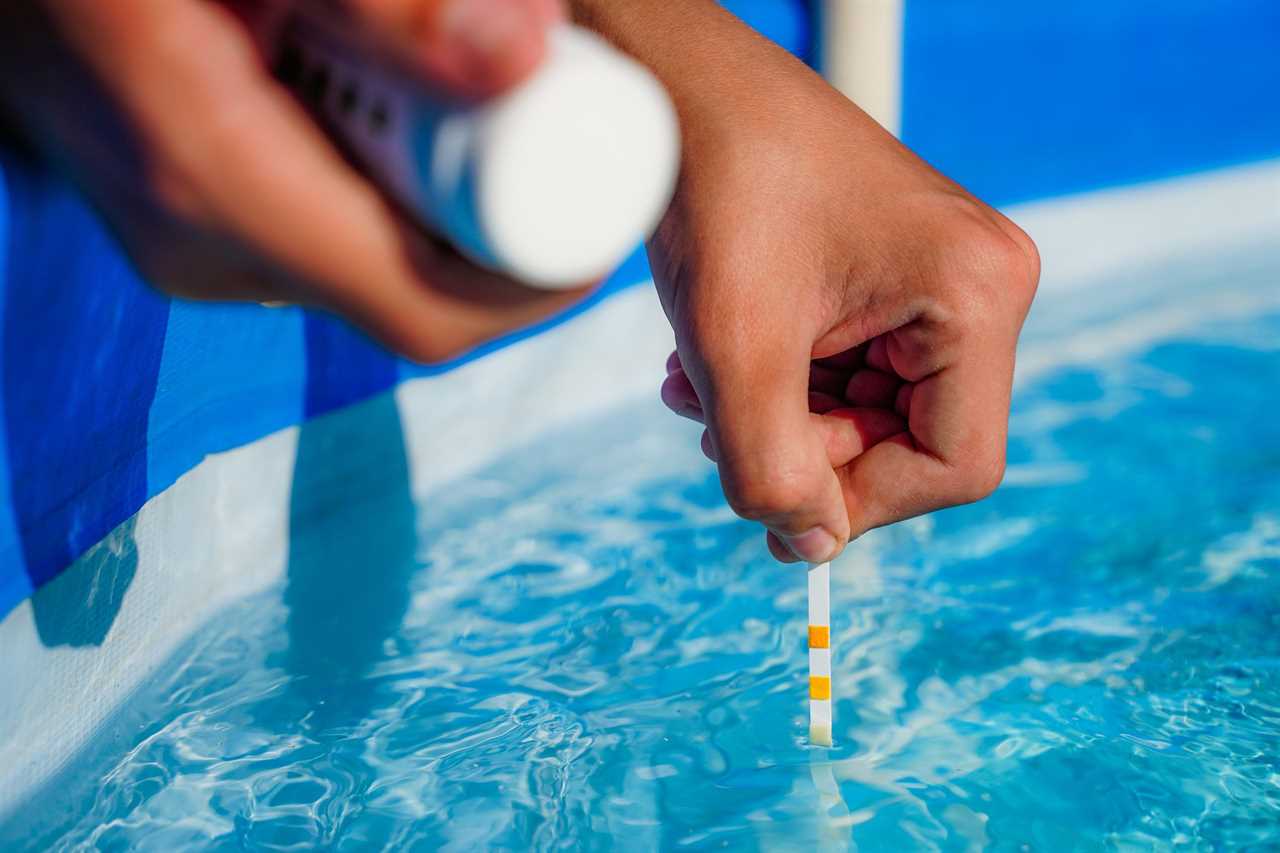There’s an autumn chill in the air, which means it’s time to close the pool for the winter. And while in-ground pools and many above-ground ones don’t need to be drained, they should be “tucked in” properly for their long winter hibernation.
Among the steps to winterizing your pool is balancing the pH level. The “pH” stands for “potential of hydrogen.” In pool water, it measures the acidity on a scale from 0 to 14. There’s definitely a “right answer” for what your pool water pH should be. Be sure you get it tested and balanced properly before you hang up your swimsuits until next summer.
Why Is Proper Pool pH Level So Important?
“The chemistry of your water, including pH, is what is responsible for keeping your pool clean, safe and healthy to use,” says Tina Doyle of Leslie’s Pool Supply. “Maintaining correct pH balance is important because it keeps your water from being too acidic [low pH] or too basic [high pH].”
Unbalanced pH can cause skin and eye irritation. But even during cold-weather months an improper pH level can cause all sorts of problems in your pool, including:
- Stains and scale on pool surfaces;
- Corrosion of metals (hardware, rails and pool equipment);
- Cloudy or discolored water;
- Plaster pitting;
- Vinyl stretching/puckering;
- Fiberglass blistering.
“Perhaps most importantly,” says Doyle, “pH has a direct impact on the efficacy and longevity of your chlorine, which can quickly lead to unsanitary water conditions.”
Why Does the Pool pH Level Matter in the Winter?
Says Doyle: “Making sure the pH is balanced before closing ensures that your chlorine can work efficiently throughout the winter months, and you’ll reduce the risk of stains and scale while the pool is closed.”
Once the pool is winterized, Doyle says you typically won’t have to worry much about water balance until spring. Still, it’s smart to test the water about once a month while temperatures are below 60 degrees, to make sure there are no chemical balance issues.
Doyle doesn’t recommend adding water balancing chemicals to the pool while your plumbing is winterized and the pump disconnected. Unless the water is circulating, the extra dose of chemicals can damage the pool.
Even if you live in a climate where you don’t have to winterize your pool, Doyle says “it’s important to still routinely check and balance your pH level to avoid any issues and maximize chlorine efficiency.”
How Do You Test Pool pH Levels?

To conduct your own water testing, you’ll need at minimum a container of chemical test strips. Dip a strip in the pool water, then measure the readout against the corresponding colors printed on the container. These show acceptable ranges for pH, bromine, chlorine and other measures.
The healthy pH range for a swimming pool is between 7.4 and 7.8. Most home kits won’t give you a numerical reading, but the “good” color range on the test control indicates an optimal pH.
You can also take your water to a pool supply store for testing, which most offer for free. Swimming pool professionals can do a more precise and detailed water analysis, provide quick solutions for balancing your water and take the guesswork out of it.
How Do You Lower or Raise Pool pH?
Doyle says adjusting pH is a process. “Before addressing pH balance, first make sure that your total alkalinity [TA] level is within the recommended range [80 to 120 parts per million, or ppm],” she says. Note that TA will almost certainly be another measure on your test strips or testing kit. “TA acts as a buffer to control pH and keep it more stable,” she says.
Raising or lowering the TA will in turn balance the pH levels. Sodium bicarbonate (baking soda) can raise TA, while sodium carbonate (soda ash) will raise pH and TA. If you need to lower the TA, use sodium bisulfate (dry acid) or muriatic acid.
Whichever direction you need to go with TA and subsequent pH levels, add the requisite chemical incrementally until TA levels adjust. Once you reach that coveted “good” color on your pool test strips or testing kit, you’re good to go.
Did you miss our previous article...
https://rsssuperfeeds.com/life-hacks/10-best-fleece-jackets-to-keep-you-warm






